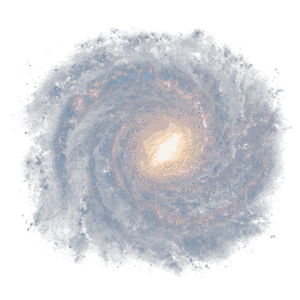The Downlink • Apr 16, 2021
A galaxy that spins in more ways than one
Space Snapshot

Feast your eyes on this stunning new photo from NASA’s Mars Odyssey spacecraft. The orbiter captured the images used to create this false-color picture of dark dunes at Mars' northern polar cap between 2002 and 2004. False-color images like this allow us to visualize wavelengths that the human eye can’t see. Image credit: NASA/JPL-Caltech/ASU.
You love space, now take action
This weekly newsletter is your toolkit to learn more about space, share information with your friends and family, and take direct action to support exploration. Anyone can subscribe at planetary.org/connect to receive it as a weekly email.
Mission Briefings


The Whirlpool Galaxy spins better than your favorite DJ. Using data from telescopes like Hubble, GALEX, and Chandra, NASA “sonified” the iconic galaxy M51, mapping minor scale pitches to different wavelengths of light. The result is haunting in a good way, like Enya in Space. Pictured: The Whirlpool Galaxy and its companion galaxy, NGC 5195, imaged by NASA’s Hubble Space Telescope. Image credit: NASA et al.

NASA’s Ingenuity will have to wait a little longer to fly. On 12 April, NASA announced it’s once again postponing the Mars helicopter’s first flight, this time due to a software update. NASA said Ingenuity is healthy and that it will provide a new flight date sometime next week.

If you think folding a fitted sheet is hard, try folding a five-layer sunshield the size of a tennis court. After about a month of folding, the James Webb Space Telescope’s sunshield is packed and prepped for its upcoming 1.5-million-kilometer (about 1 million miles) voyage to L2. The sunshield will be instrumental in protecting the telescope’s mirrors and sensors.

NASA’s OSIRIS-REx has bid adieu to asteroid Bennu. On 7 April, the spacecraft completed its final flyover of the asteroid it reached in 2018. It will stick around Bennu until 10 May before beginning its long journey back to Earth, where it’s expected to deliver an asteroid sample on 24 September 2023.

Blue Origin completed a flight of its New Shepard spacecraft that tested astronaut pre- and post-flight procedures. For the test, Blue Origin personnel boarded the capsule prior to launch for communications checks. They exited for the actual flight and then reentered the capsule after it landed to simulate how crews will leave the capsule.
From The Planetary Society


The work of Gerard K. O’Neill made dreams of a future in space more tangible than ever before. The American physicist and space pioneer envisioned vast, magnificent human settlements in space, as seen in the artist’s concept above. His life’s work is the focus of a new documentary called The High Frontier. This week’s Planetary Radio features an interview with the documentary’s producers and director. Image credit: NASA/Ames Research Center/Rick Guidice.

The Planetary Society applauds the latest NASA budget request. This week the White House released a fiscal year 2022 budget proposal that includes $24.7 billion for NASA. That’s a 6.3% increase from 2021, which meets The Planetary Society’s five-over-five recommendation to the Biden administration. The outline is not specific on other FY22 Society priorities, with the exception of stating support for Mars sample return and the Europa Clipper. NASA released a statement from Acting Administrator Steve Jurczyk celebrating the budget proposal and its support for the continuation of the Artemis program, which the agency says will land the first person of color on the Moon. NASA has previously said its back-to-the-Moon program will land the first woman on the lunar surface; this is the first time a person of color has been mentioned.

It’s not too late to speak up for space. Until the end of this month, U.S. citizens can send a petition to your representatives in government showing your support for NASA space science. And no matter where you live, you can help The Planetary Society continue our fight for space science and exploration by making a gift to our space policy and advocacy program. Every contribution helps make the future of space exploration brighter.
What's Up

Mars is getting lower in the early evening sky night by night, forming a triangle with reddish star Aldebaran and bright Betelguese. In the predawn sky you can see bright Jupiter and yellowish Saturn in the east. Learn more at planetary.org/night-sky.
Earthlings vs Asteroids: What’s The Score?

On 29 April 2021 join us for a special virtual event that takes a look at the state of humanity’s planetary defense efforts. How much do we know about the asteroids that are out there? And how prepared are we to prevent an impact? We’re bringing together some of the world’s foremost experts on planetary defense to find out. This free live event can be watched on Facebook, YouTube, and planetary.org/live.
Wow of the Week

This sketch of the Whirlpool Galaxy from 1845 represents a breakthrough in our understanding of the cosmos. Irish astronomer William Parsons had recently completed construction of the world’s largest telescope, the 72-inch "Leviathan of Parsonstown." He used this groundbreaking observatory to look at the Whirlpool Galaxy and saw, for the first time, the spiral structure of a galaxy. The Leviathan of Parsonstown remained the world’s largest telescope, in terms of aperture size, until 1917.


 Explore Worlds
Explore Worlds Find Life
Find Life Defend Earth
Defend Earth


